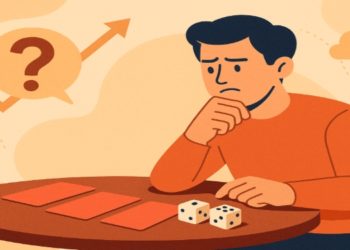Dreams have fascinated humans for centuries, sparking interest in their origins and means. From historic civilizations to fashionable technology, the study of goals, or oneirology, has developed extensively. You can get more information on related topics through a trusted source
https://deusmedical.com/. This article will explore the science behind dreams and uncover a hidden mystery of the subconscious mind.
What Are Dreams?
Dreams are the sum of your thoughts, pictures, and sensations in your mind during sleep. At the same time, a person can see many dreams, but not all are remembered.
Dreams usually arise during the rapid eye movement (REM) level of sleep. Increased mental pastime, vivid dreams, and brief muscle paralysis characterize this. On average, a person reviews 4 to 6 dreams at night, every last between 5 to 20 minutes.
The Purpose of Dreams
The cause of dreams remains one of the most debated subjects among scientists and psychologists. Here are some theories that try to explain the concept of dreams.
Psychoanalytic Theory: This idea relies on Sigmund Freud. It suggests that dreams are manifestations of our goals and anxieties. These are frequently related to repressed memories and subconscious desires. Freud believed that analyzing goals may provide awareness of the subconscious mind.
Activation-Synthesis Theory: This theory points out that dreams are our mind’s way of making sense of random neural interest in the sleep duration. According to this, the mind synthesizes this hobby into coherent tales or pictures, resulting in dreams.
Information-Processing Theory: Dreams may additionally function in processing and consolidating records gathered throughout the day. This principle indicates that dreaming helps kindle memories, solve issues, and cope with feelings.
Threat Simulation Theory: Proposed by Antti Revonsuo, this evolutionary principle suggests that dreams serve as a practice session for actual-life threats. By simulating threatening situations, dreams help people face danger when they awake.
The Role of the Subconscious
The subconscious mind plays a vital role in the dreaming system. The thoughts keep our emotions, memories, and stories in our minds. During sleep, the subconscious mind techniques those elements and weaves them into dreams. This method can help people solve troubles and emotions, contributing thoroughly to psychology.
Lucid Dreaming
Lucid dreaming is a phenomenon in which the dreamer becomes conscious that they may be dreaming and can regularly control the dream’s content. This internal recognition of a dream can be thrilling, allowing humans to discover their creativity without the restrictions of truth. This bargain might also account for many goals’ illogical and surreal nature.
Role of Neurotransmitters: Neurotransmitters, which include serotonin, dopamine, and norepinephrine, play an important role in regulating sleep and dreams. For example, a reduced amount of serotonin and norepinephrine sooner or later in REM sleep is associated with dreams.
Increased Activity Inside the Limbic System: The limbic device regulates feelings and is especially active for the duration of REM sleep. This interest explains why goals regularly contain strong emotional content.
Reduced Activity Inside the Prefrontal Cortex: The prefrontal cortex is accountable for logical thinking and choice-making. It shows decreased pastime during REM sleep. This may account for the illogical and weird nature of many dreams.
The Future of Dream Research
The potential destiny of dream trends consists of the following:
Dream Recording: Scientists are exploring methods to record and interpret dreams. This could be done through advanced neuroimaging strategies and synthetic intelligence.
Dream Therapy: At this stage, dreams are utilized in healing systems. It deals with mental health issues, which include tension, depression, and PTSD.
Enhanced Understanding of Consciousness: The study of dreams may also offer broader insights into the nature of awareness and the human mind.
Conclusion
Desires are a charming and mysterious element of the human experience. As technology progresses, our knowledge of goals and their connection to subconscious thoughts will continue to deepen. It will impart new perspectives on the human psyche.












































































